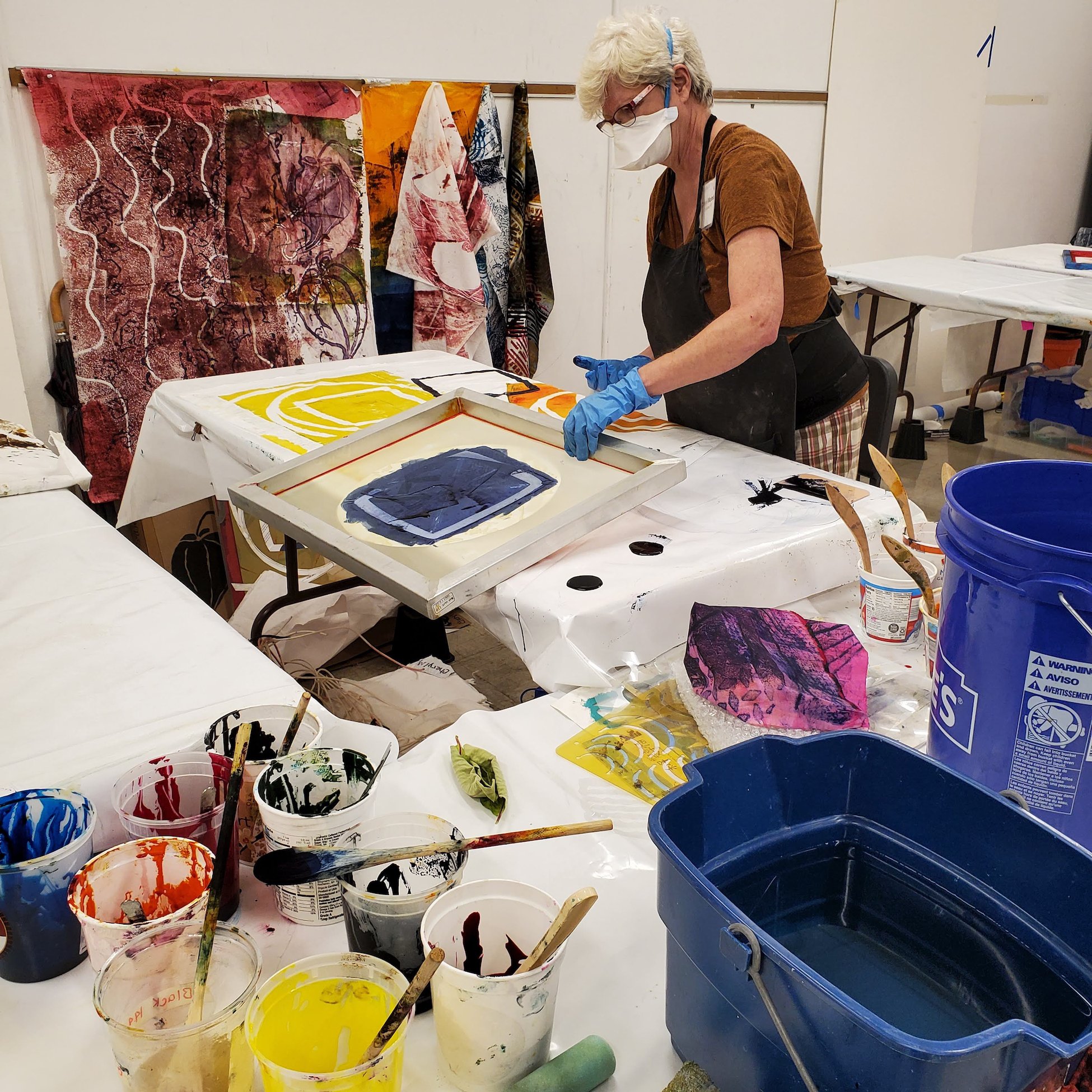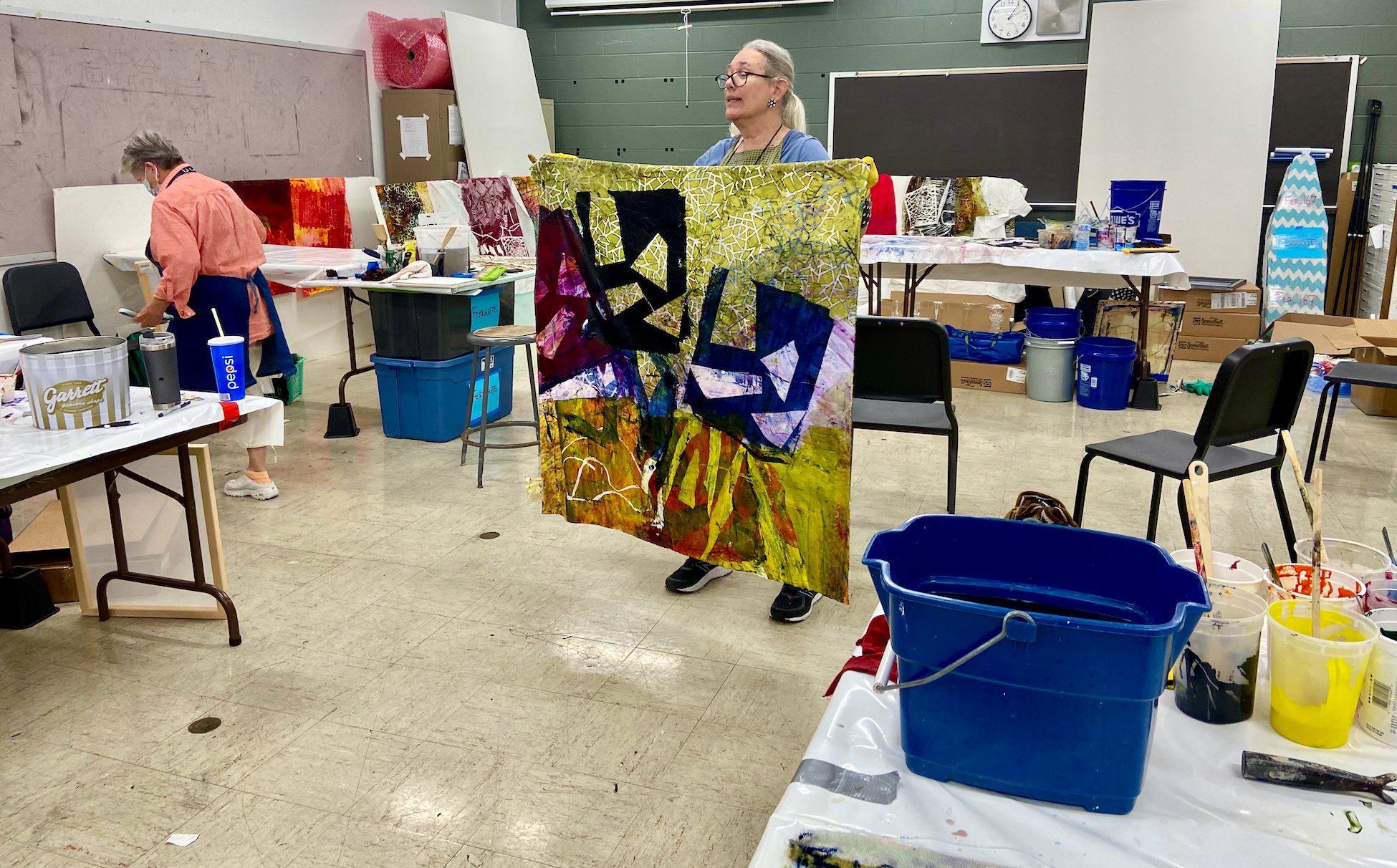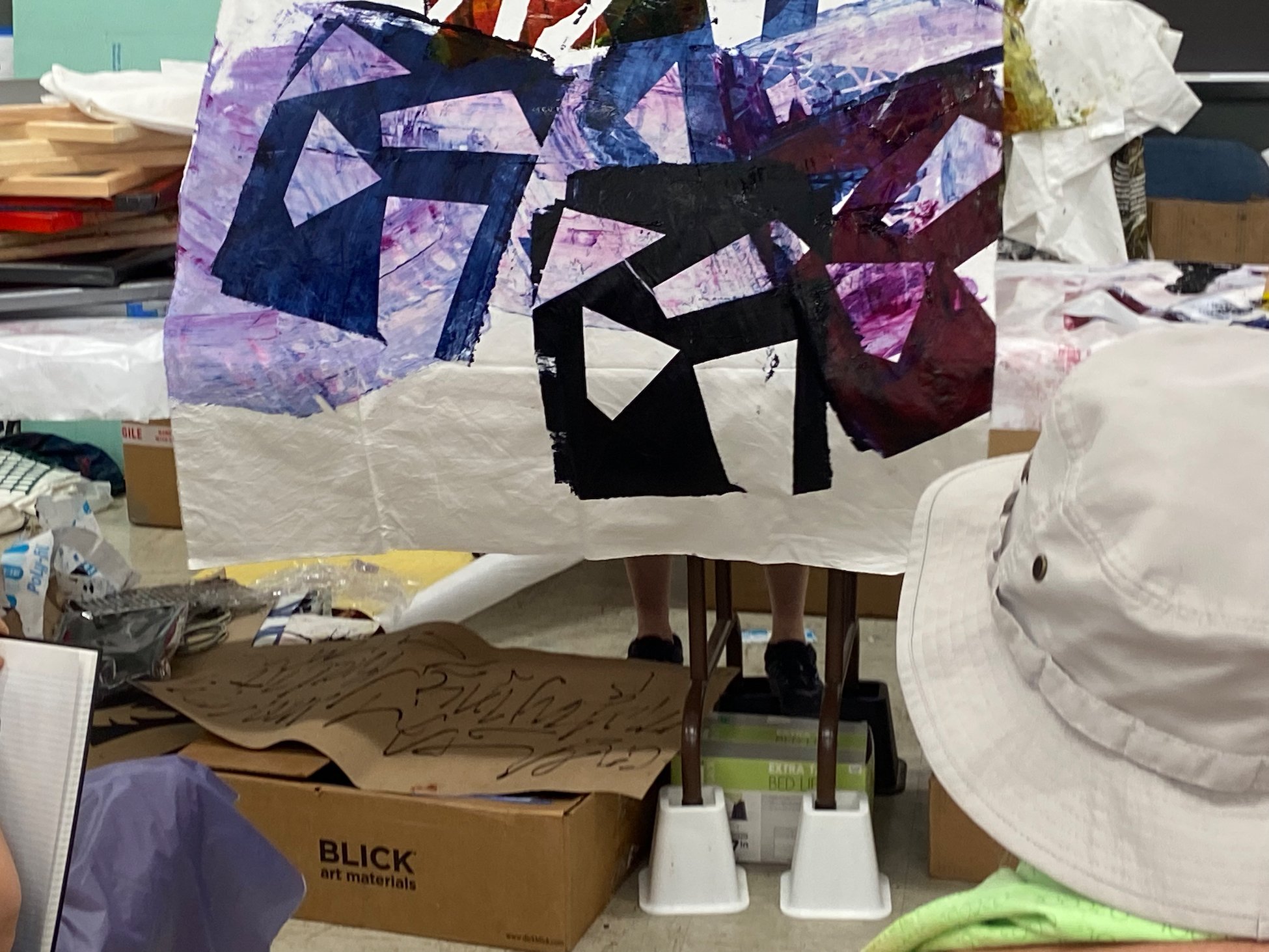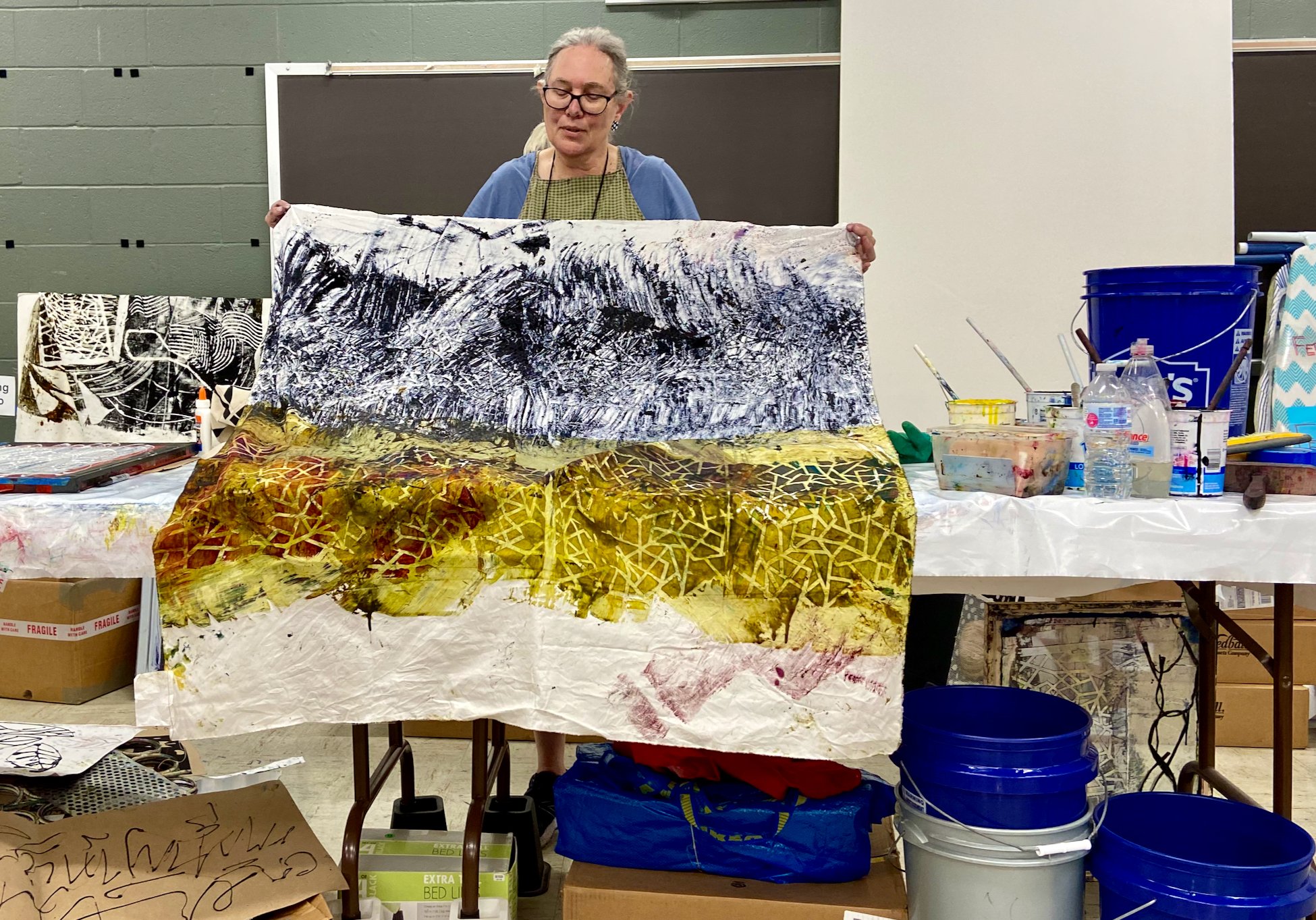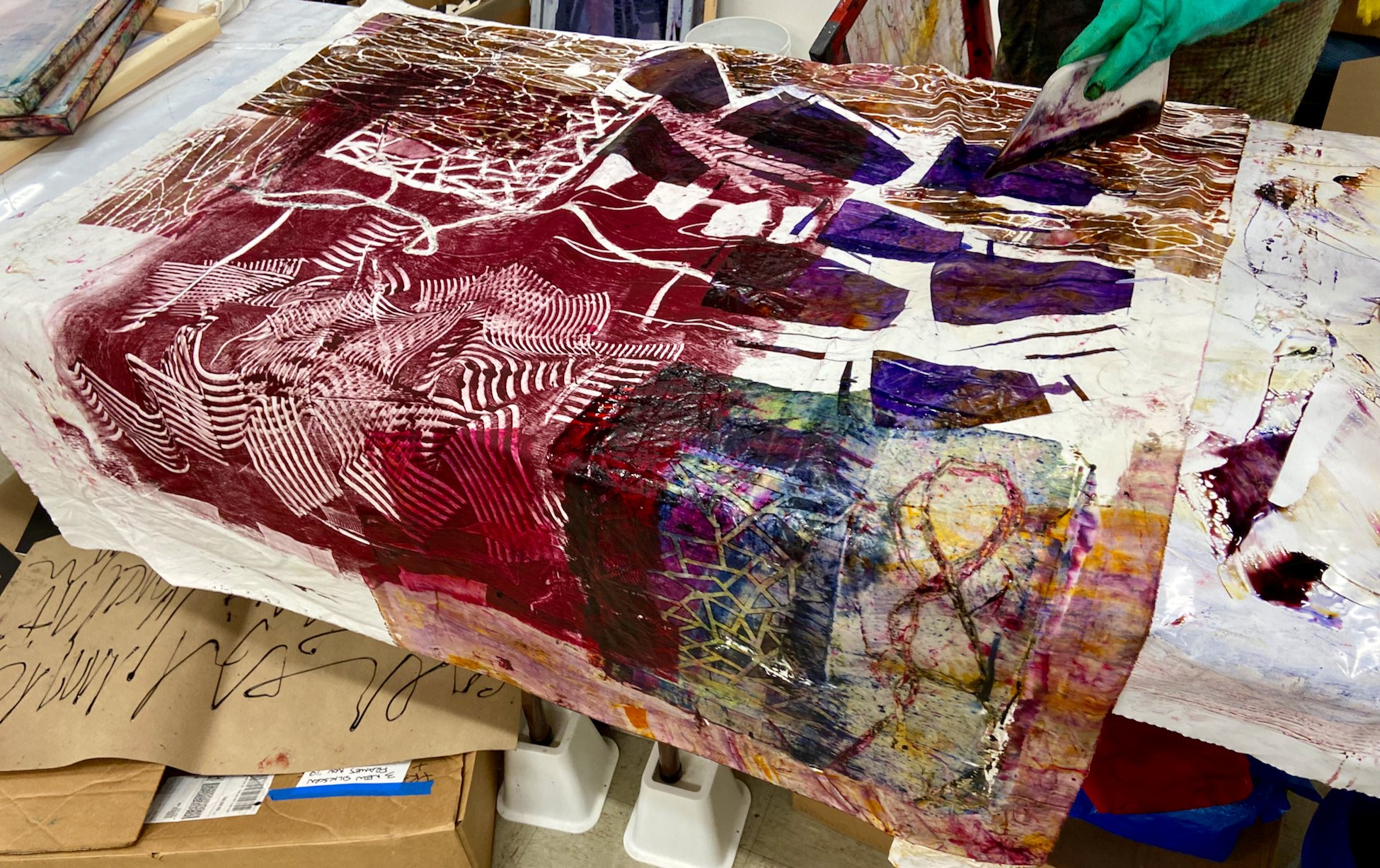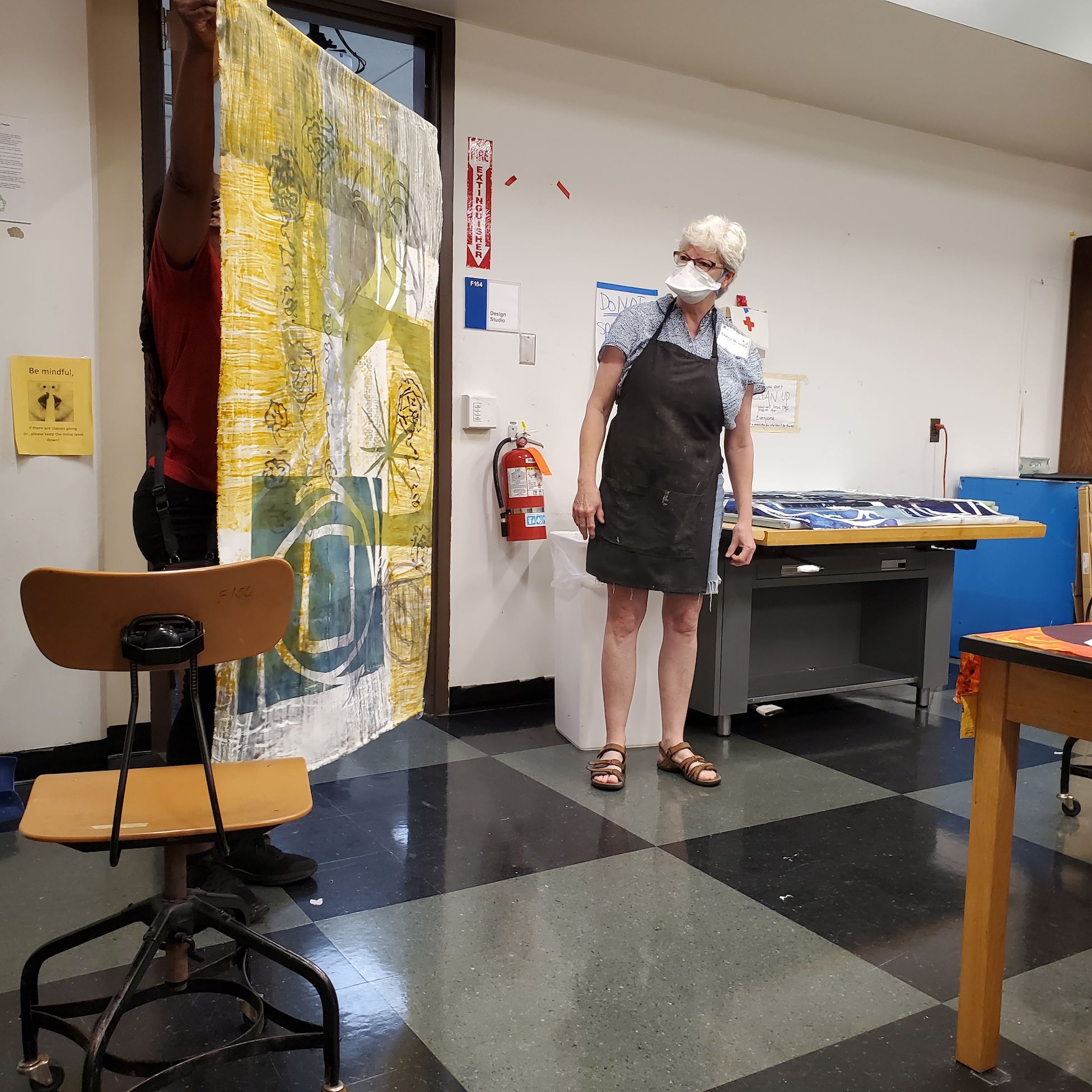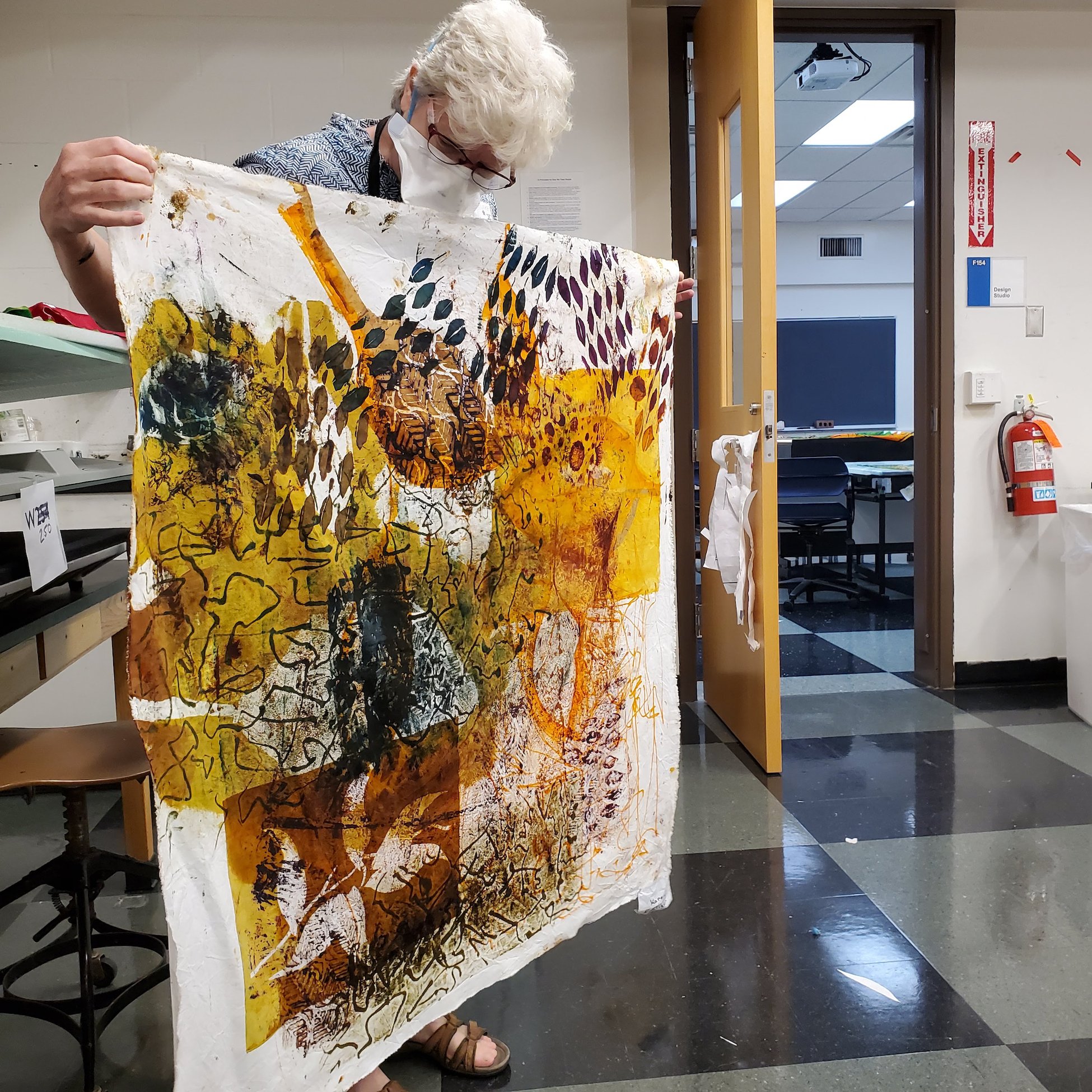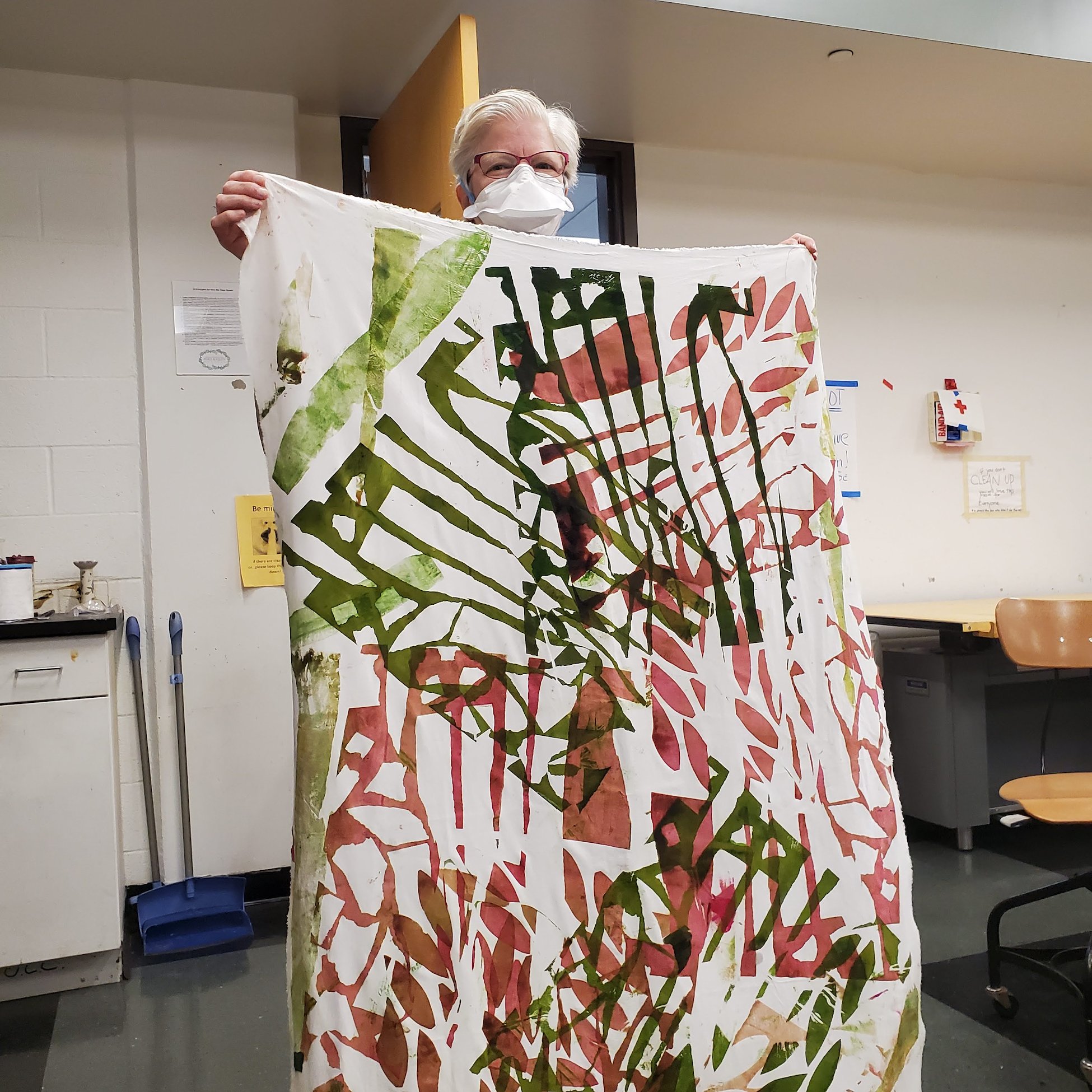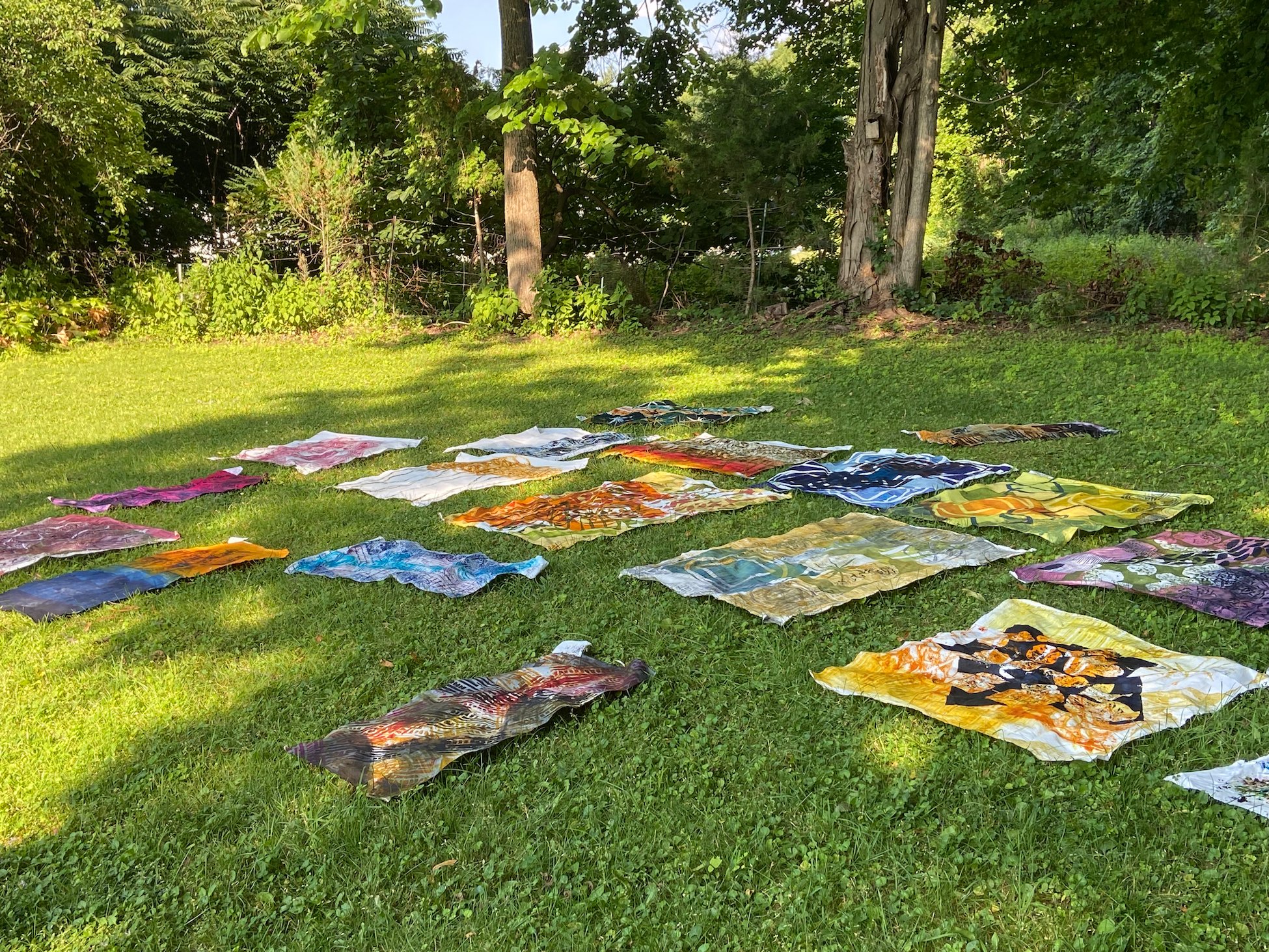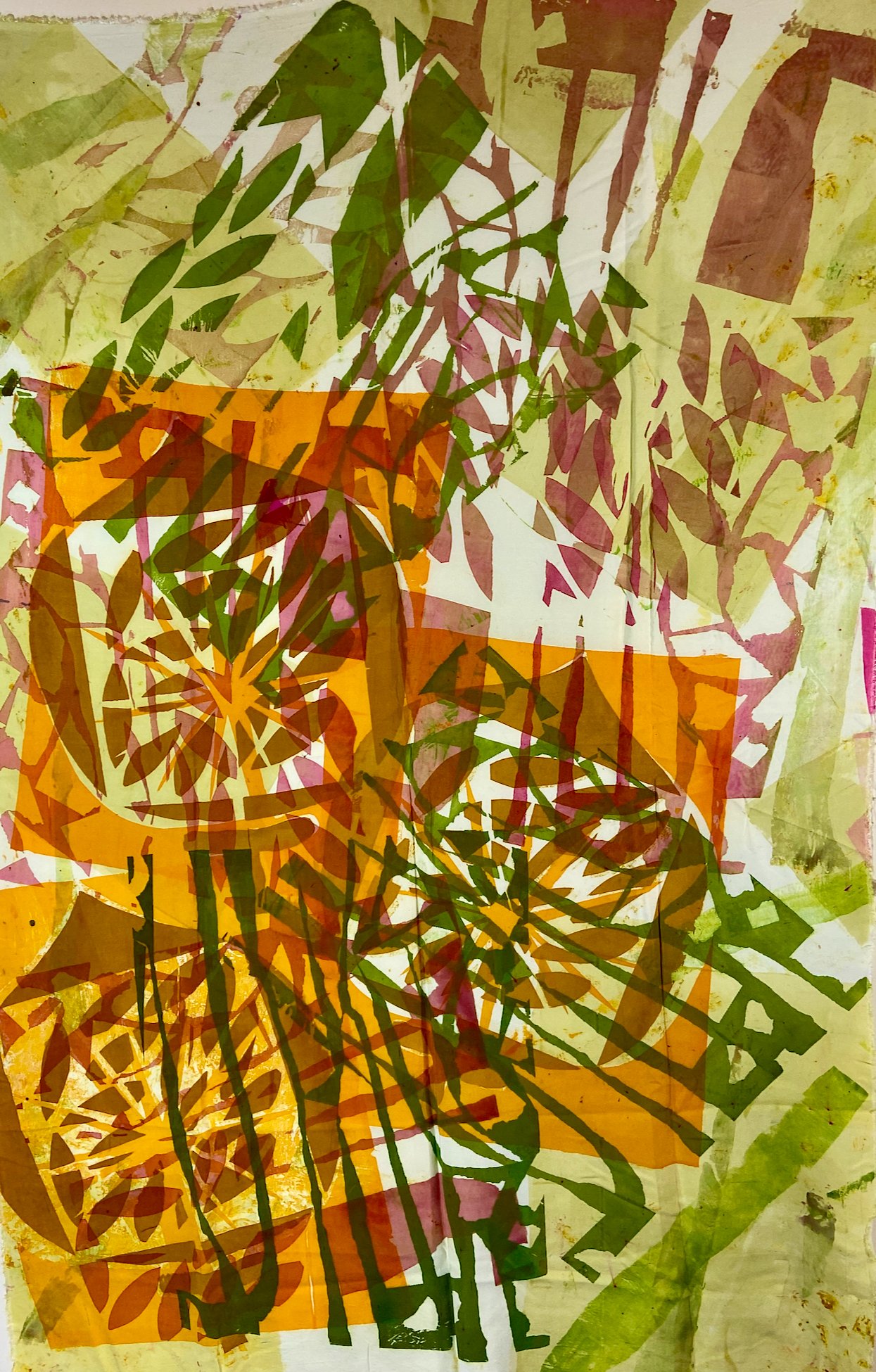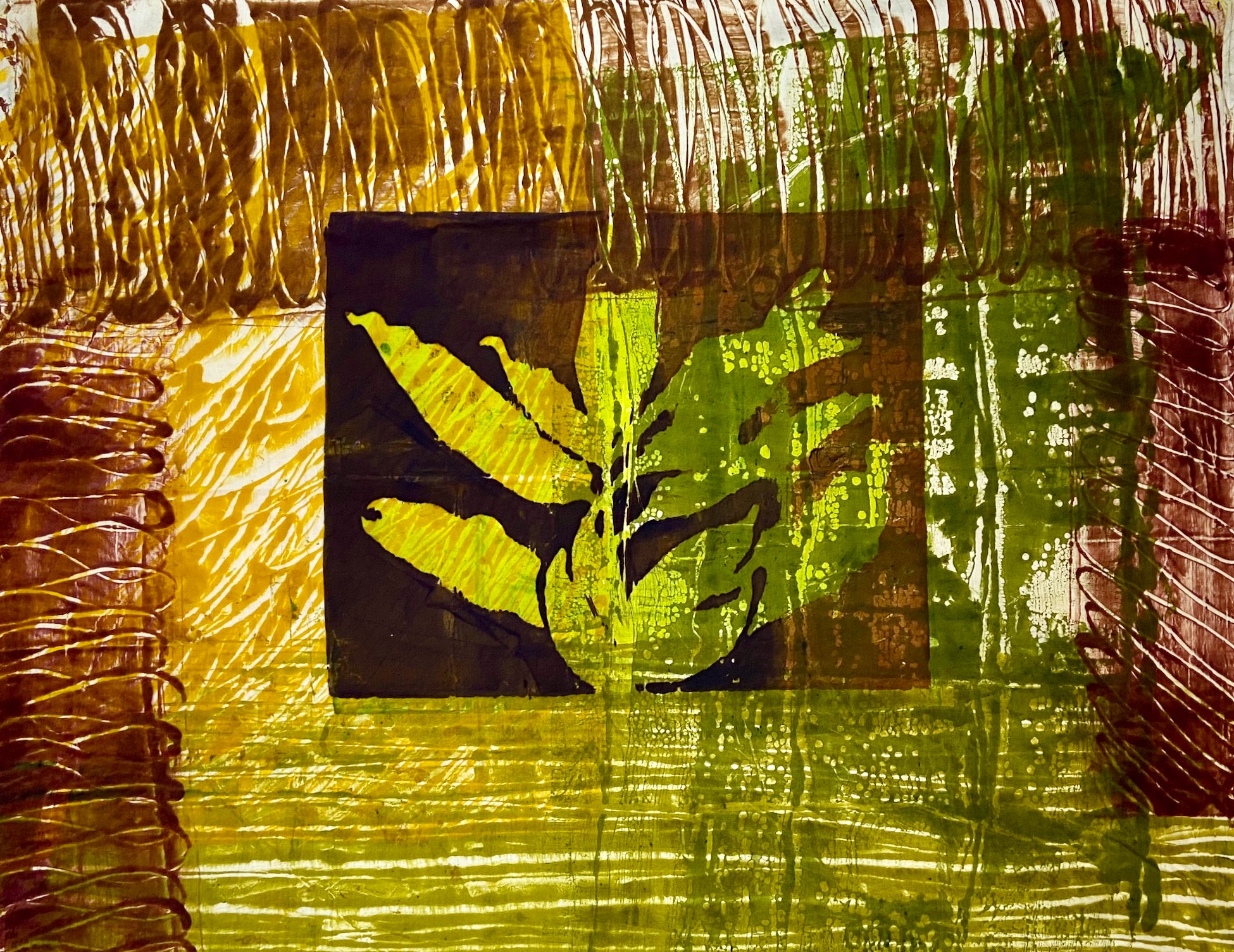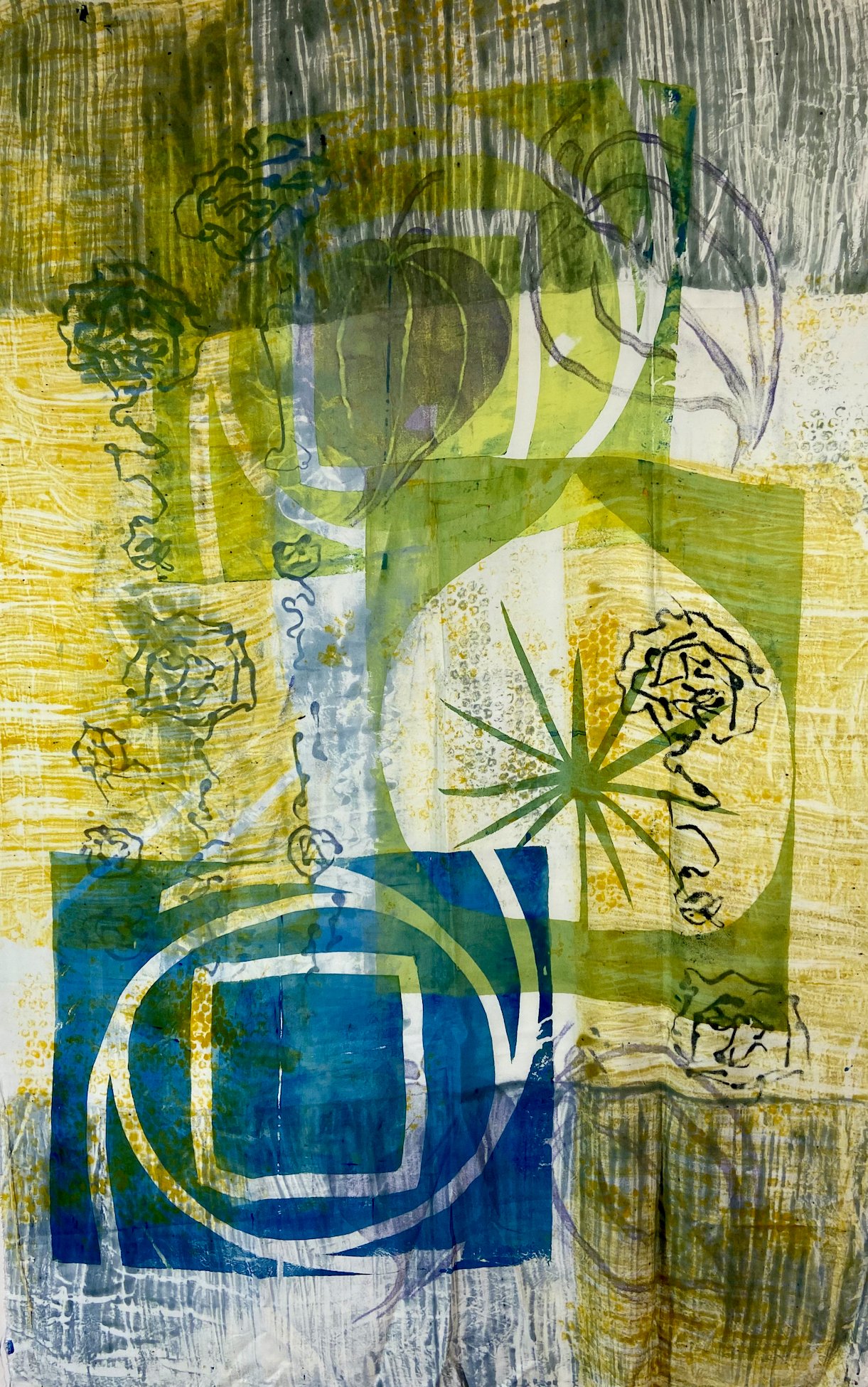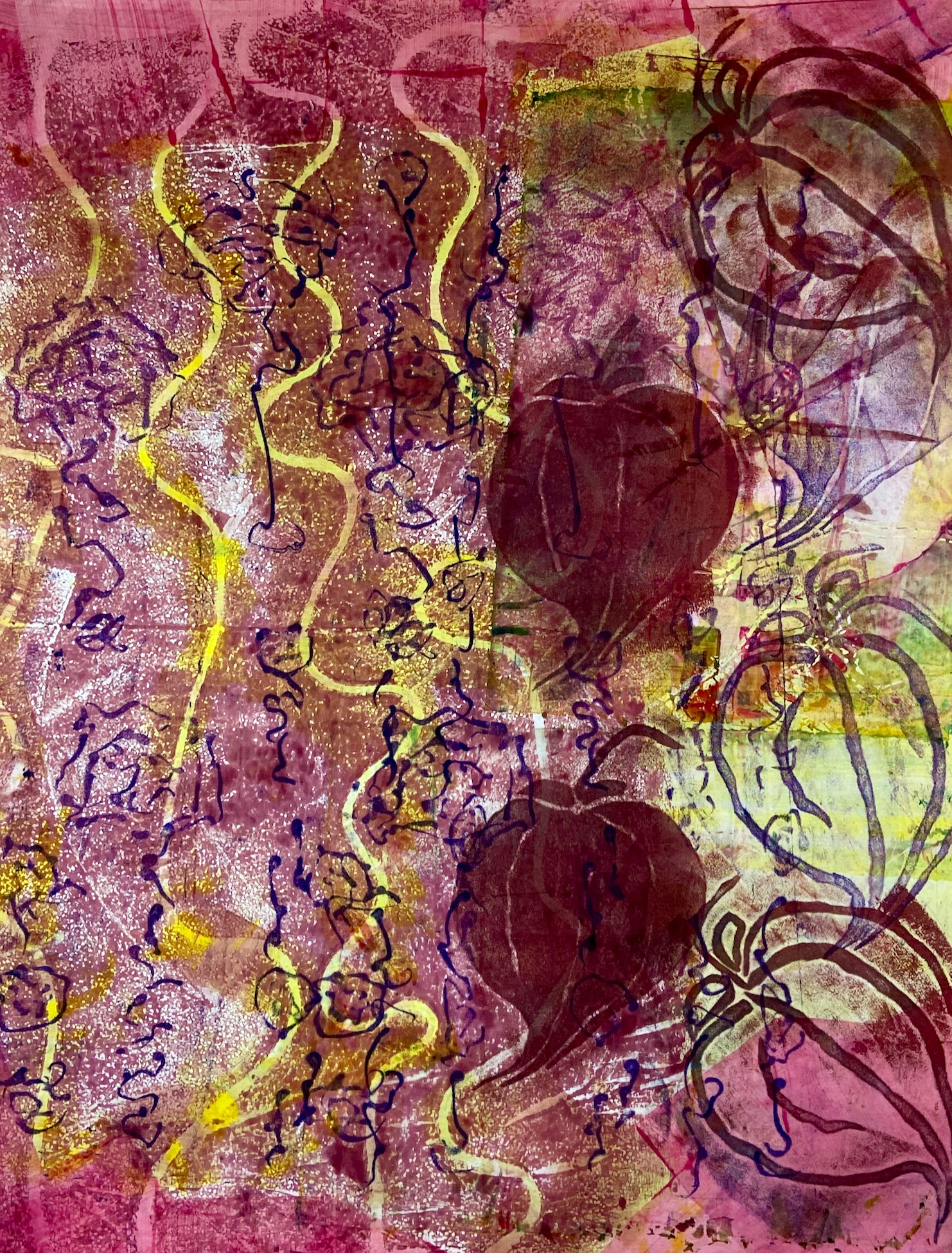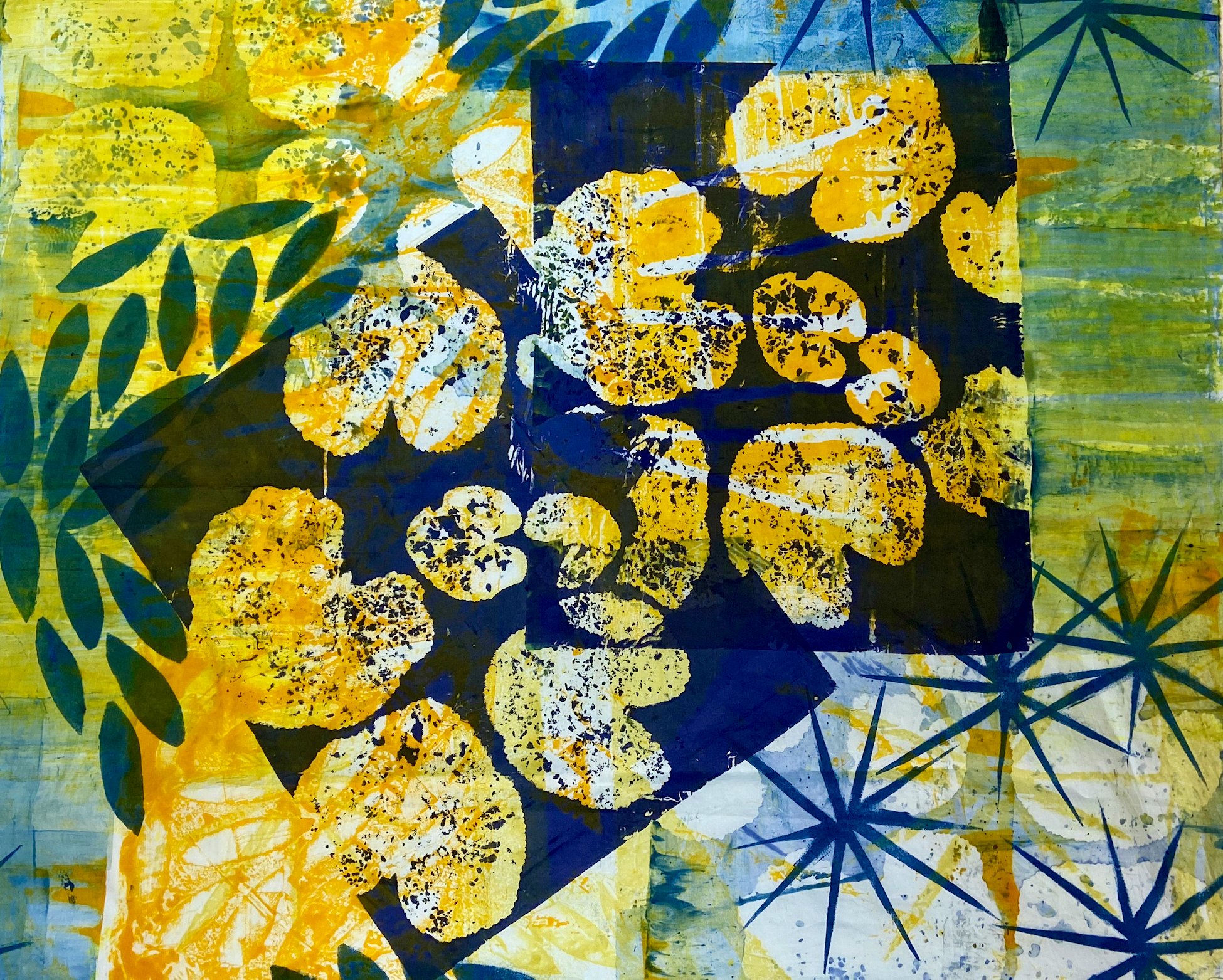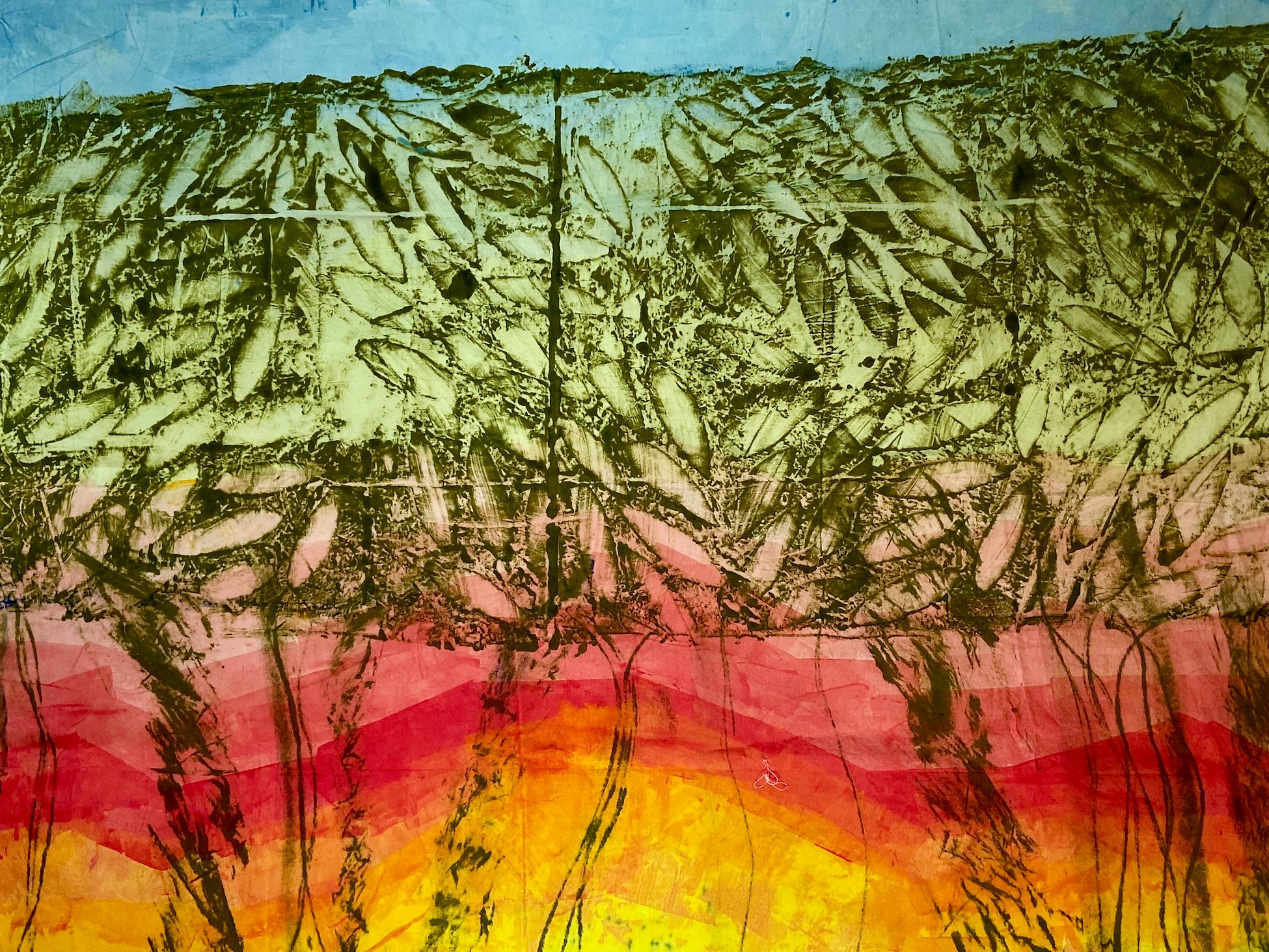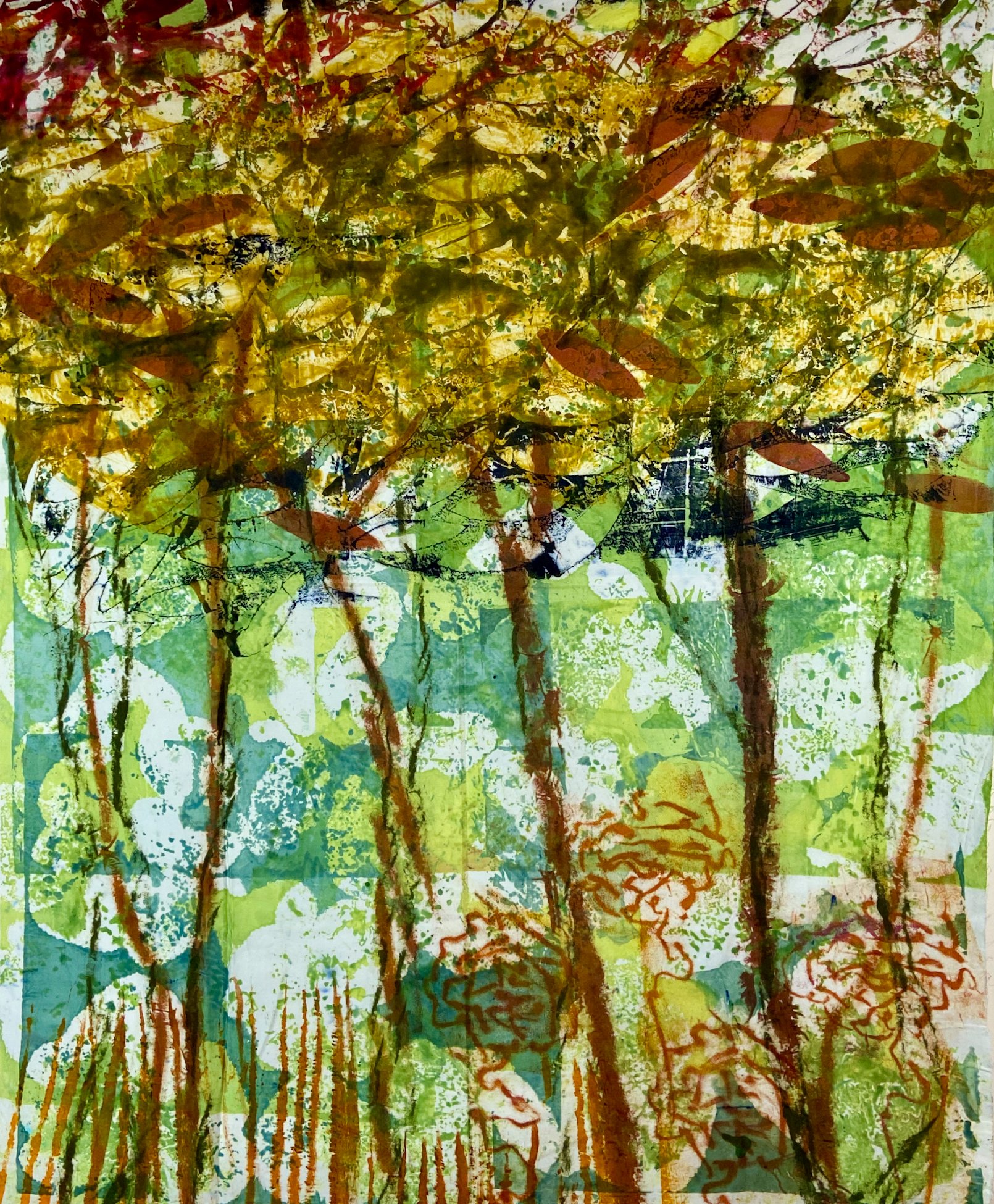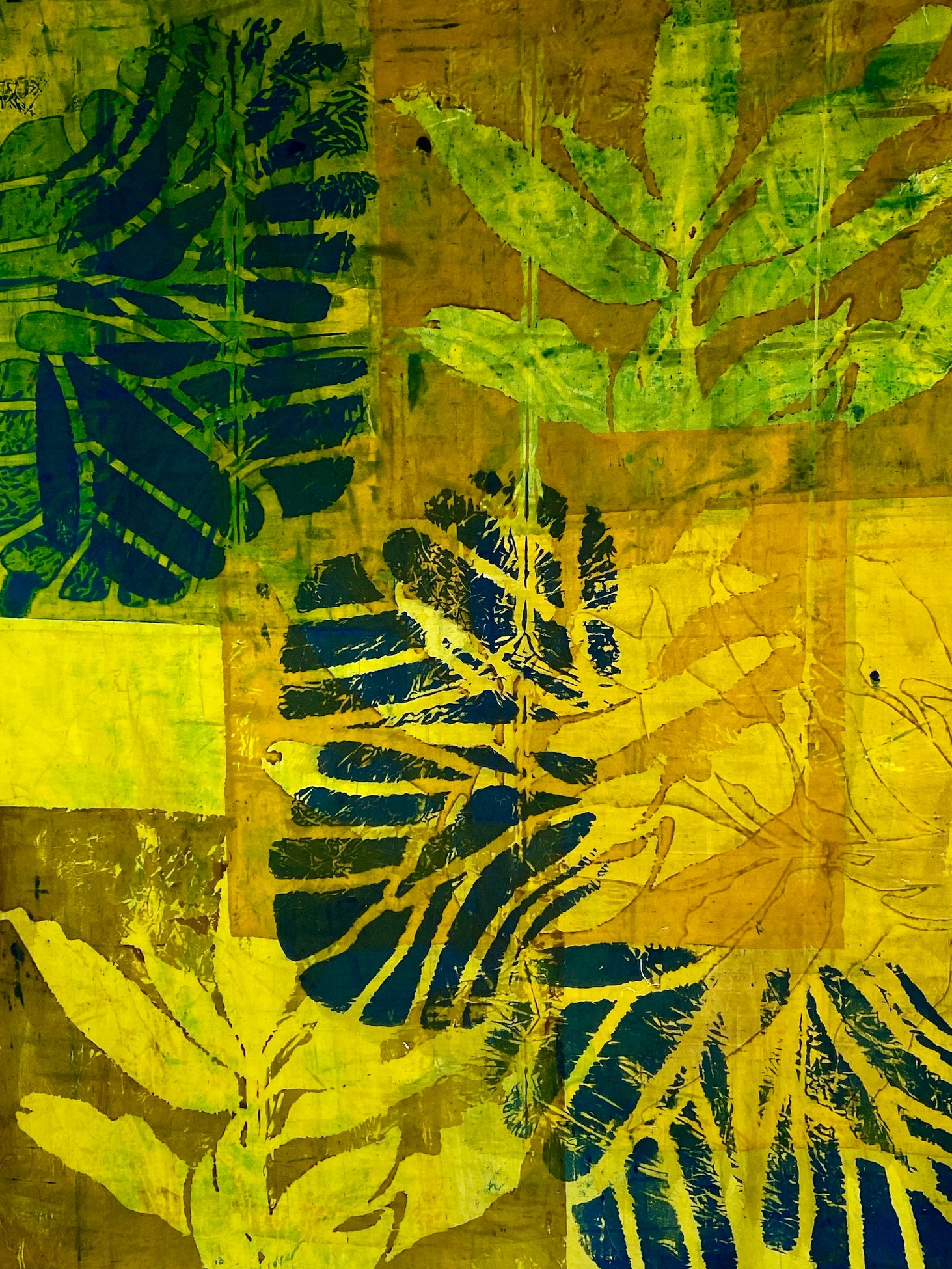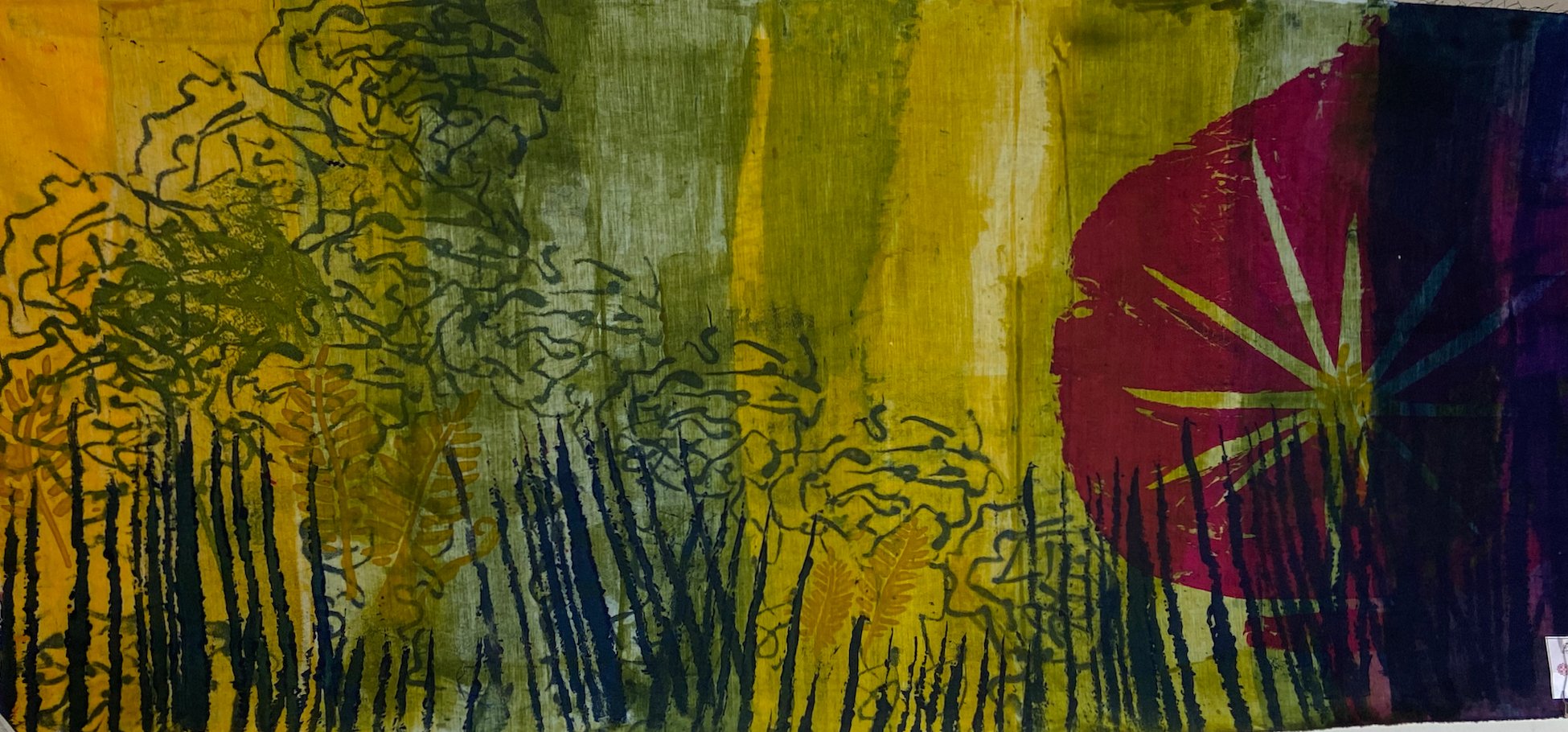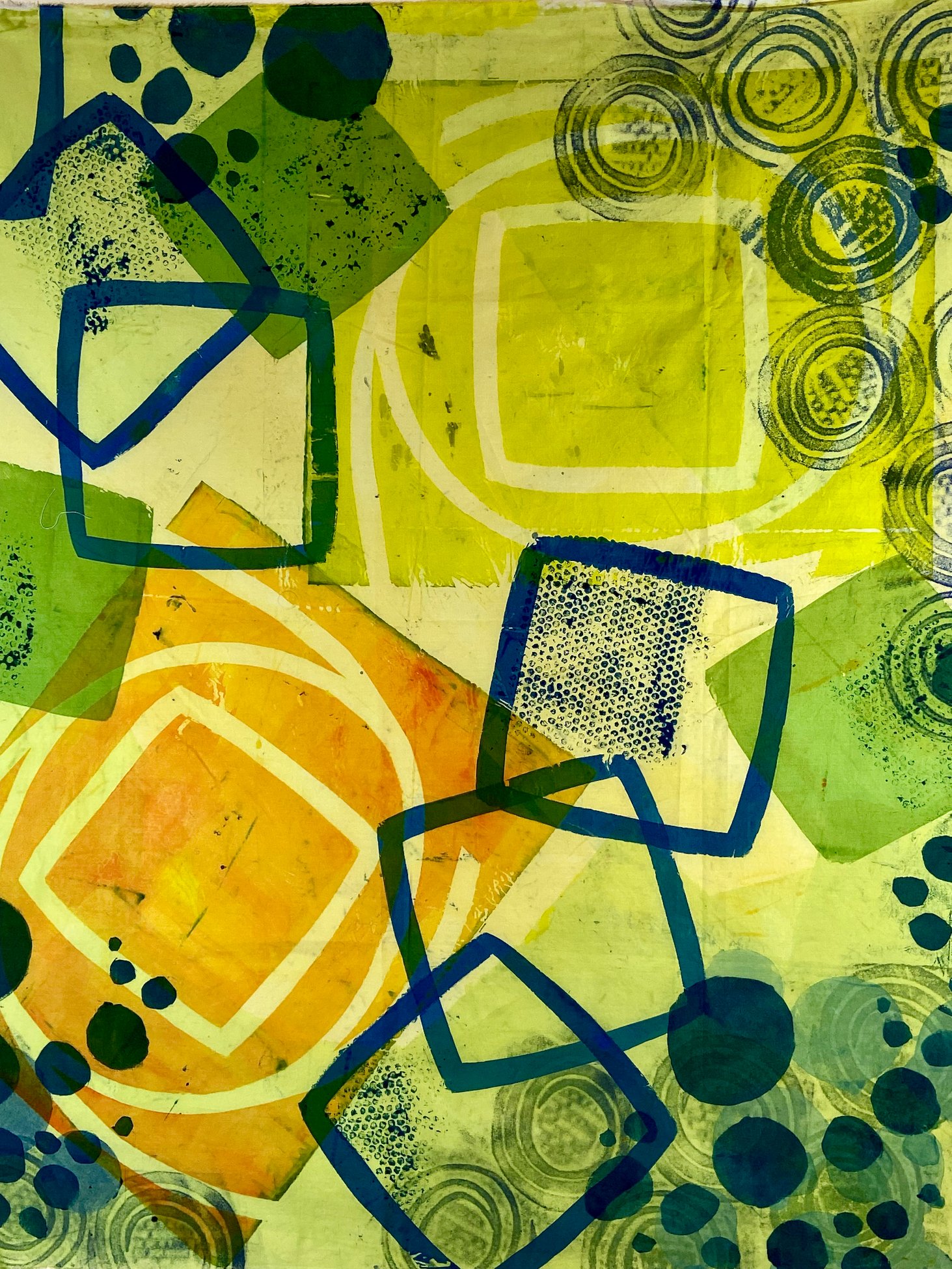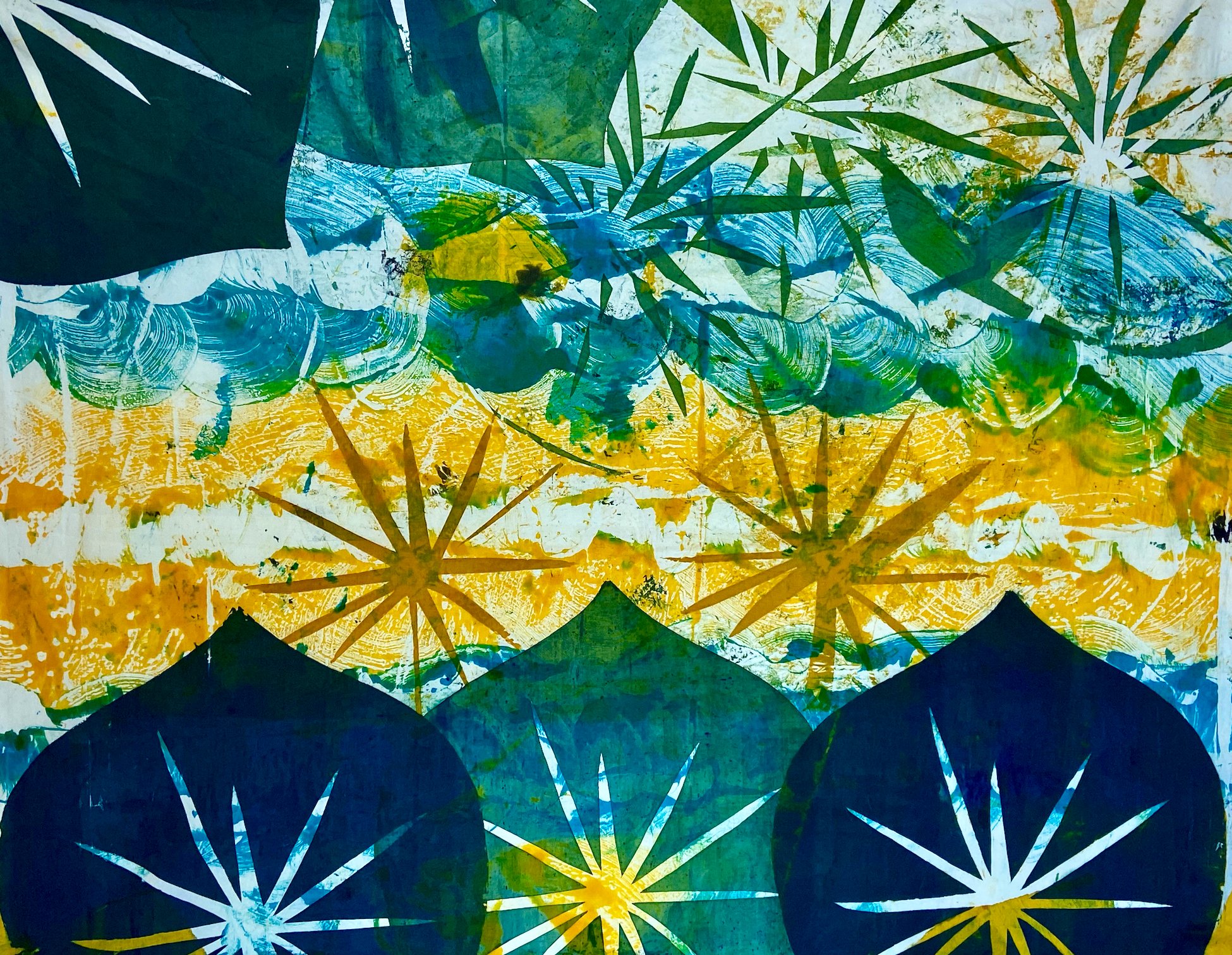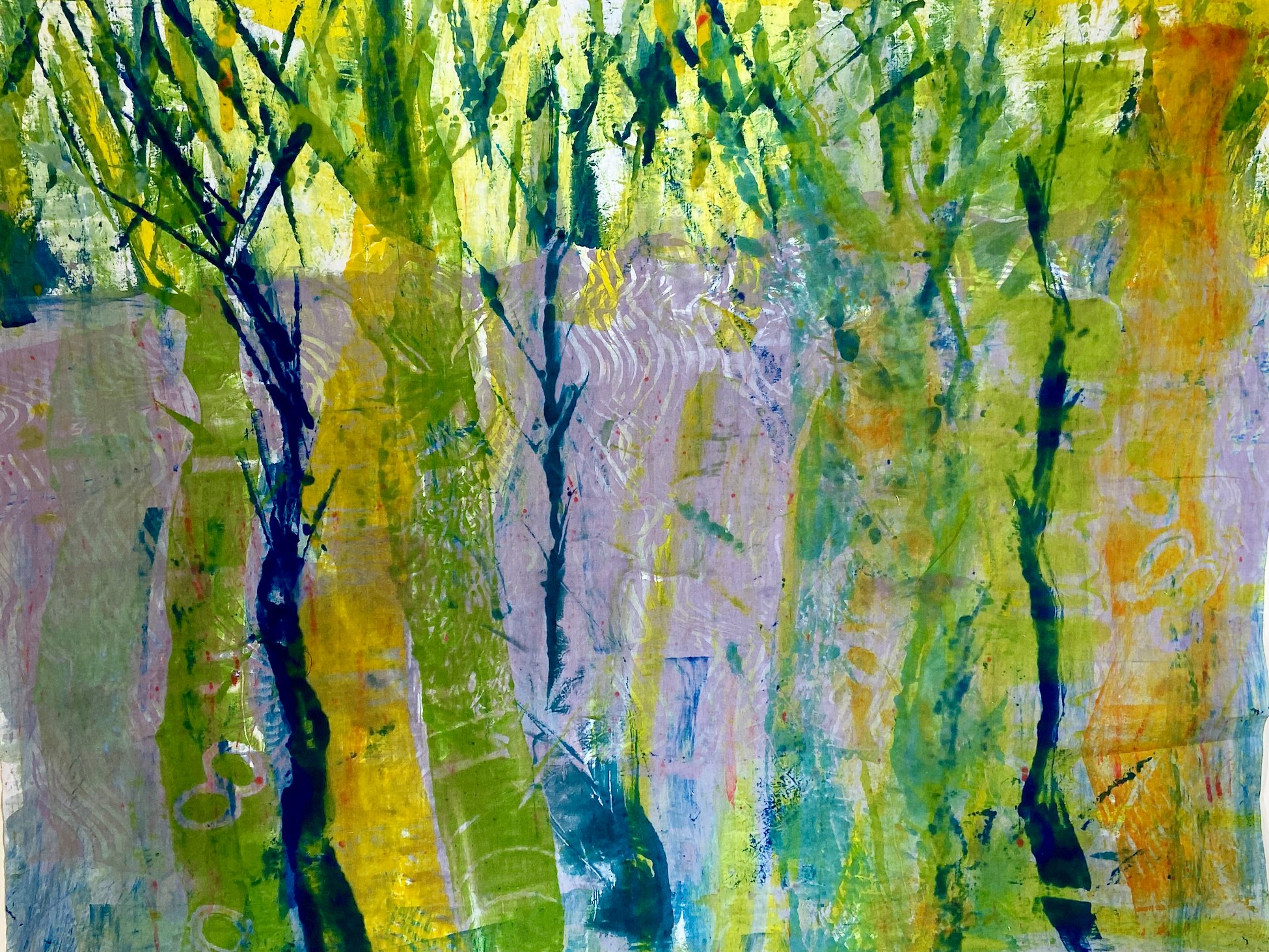Go Big, Go Bold Workshop
My workspace at Quilts by the Lake, Onondaga Community College
Thank you to the Weaver’s Guild of Rochester and the Horace Lethbridge Scholarship Fund for helping me to participate in Quilting by the Lake, Go Big! Go Bold! Workshop.
Thank you to Pat Pauly for being a wonderful teacher.
I had been waiting, with high expectations, for July 18-22, 2022, the first secession of Quilts by the Lake. “Go Big, Go Bold!” the workshop title, was exactly the next best step I needed in my fiber art practice. Here is the class description-Join Pat Pauly for this five-day workshop where we print large scale fabric throughout the week. With a myriad of printing techniques using fiber reactive dye on fabric we’ll use large graphics to produce whole cloth works. Silk screen, mono-print, stencil – along with a few more techniques – are used to print large images that can become the finished whole cloth. This class is for those already experienced with printing, and is designed for intermediate or advanced printers. Print with an eye on the whole design and Go Big, Go Bold.
My workspace with thickened dyes for printing on fabric.
Although I have dyeing experience, this workshop teaches things I’ve never done, including mono printing with dyes on fabric and screen printing. We will dye 20 plus yards of fabric, which sounds VERY exciting to me! One of the things I need to improve in my art is loosening up my mark making and being more spontaneous. I think working with whole cloth pieces and these techniques would help me do that. Pat Pauly’s expressive, exuberant, printed fabric compositions have qualities I knew would add to my artist tool kit.
Pat Pauly showing a demonstration piece she did during the workshop.
We started the class with beginning exercises using fiber reactive dye thickened with printing paste on cotton fabric. The cotton was previously soaked in soda ash and water. The techniques for printing on the fabric, were unlike any I had used before. We used a scraper to mix the dye and print paste directly on our plastic covered worktable. We used the scraper, like a paint brush, to apply it to the fabric. To practice mixing dye colors and using the scraper, we created a value scale and mixed colors into each other. Each morning and each afternoon, Pat would demonstrate different techniques for printing on our fabrics. We scraped dye over stencils to create patterns and textures. We scraped through wet dye to blend colors or put solid color onto the fabric. We learned how to create motifs by rubbing with a foam roller, textured objects under the fabric, like a glue drawing, a foam or cardboard collagraph. We created and printed our own silkscreen motifs using Tyvek, glue, paper, tape, and soy wax. One of my favorite techniques was “Print the Table” where you can use your whole worktable to mono-print. I was so excited about the work we were doing, I continued in the evenings to produce more masks and stencils to use the following day.
In addition to learning techniques, we discussed composition, not of an allover design, like fabric yardage, but a finished whole cloth. In other words, can the cloth stand on its own if made into a quilt or as a painting on cloth. Crucial too that aim is using repeating motifs, taking the same shape, line, or texture and repeating it in different ways. Those motifs, in this instance, should be relatively large. Go Big, Go Bold! This was definitely a stretch for my brain. Pat is so practiced in printing whole cloth fabric, that even a rushed “demo” in class miraculously turns into a beautiful artwork that stands on its own. Amazing! She brought many whole cloth pieces from home to inspire us and when she had free moments worked on transforming her demos into magic.
Critique and discussion played an important role in learning. Each morning we picked a piece of our work in progress or finished to discuss with the group. One afternoon we chose another persons work to discuss. Pat and participants offered constructive comments.
During the 5 day workshop, I started or completed almost 20 yards of printed fabrics. I moved my car out of the garage, set up a dyeing table and kept working almost immediately. We had wonderful leftover dye and print paste that kept me busy for all the available time I had. Spreading my pieces out on the lawn to review I can see some of the skills and techniques I added to my artist’s tool kit. I learned more about dyeing in general, plus multiple printing techniques, motifs, and about composition. Importantly, I met my goals and feel I made a big jump in my understanding about creating art. I learned how to loosen up and work more intuitively by “getting out of my own way,” reacting to what is happening on the cloth, not thinking too hard, but using informed serendipity to create more authentic work. I feel this workshop will influence my work for years to come.
Anxious to see what I had accomplished in 5 days, I laid the unwashed prints on the lawn to view.
I quickly set up a dying station at home in my garage.
Hand printed cotton drying on the line.

